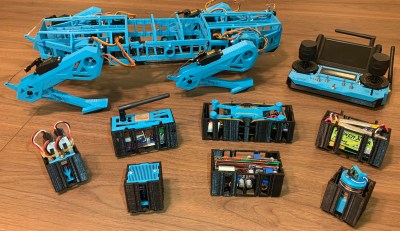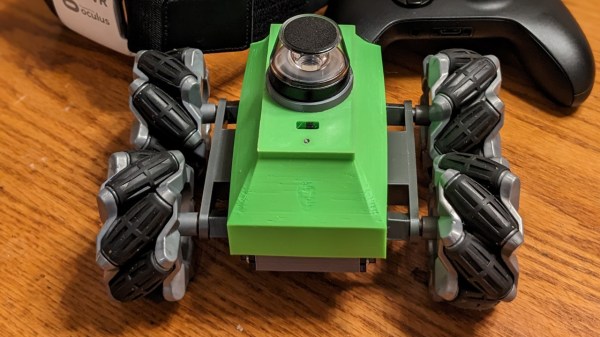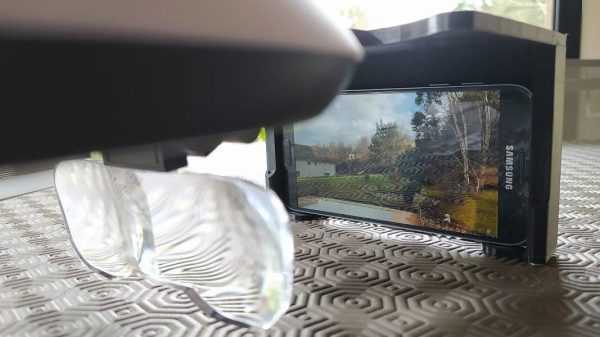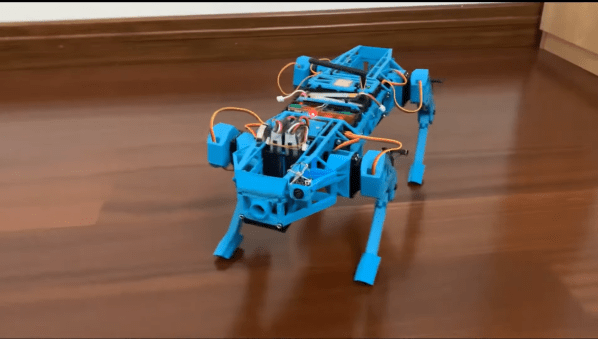You don’t always need much to build an FPV rig – especially if you’re willing to take advantage of the power of modern smartphones. [joe57005] is showing off his VR FPV build – a fully-printable small Mechanum wheels car chassis, equipped with an ESP32-CAM board serving a 720×720 stream through WiFi. The car uses regular 9g servos to drive each wheel, giving you omnidirectional movement wherever you want to go. An ESP32 CPU and a single low-res camera might not sound like much if you’re aiming for a VR view, and all the ESP32 does is stream the video feed over WebSockets – however, the simplicity is well-compensated for on the frontend. Continue reading “2022 FPV Contest: ESP32-Powered FPV Car Uses Javascript For VR Magic”
2022 FPV Contest3 Articles
2022 FPV Contest: A Poor Man’s Journey Into FPV
FPV can be a daunting hobby to get into. Screens, cameras, and other equipment can be expensive, and there’s a huge range of hardware to choose from. [JP Gleyzes] has been involved with RC vehicles for many years, and decided to leverage that experience to do FPV on a budget.
Early experiments involved building a headset on the cheap by using a smartphone combined with a set of simple headset magnifiers. With some simple modifications to off-the-shelf hardware, [JP] was able to build a serviceable headset with a smartphone serving as the display. Further work relied upon 3D printed blinds added on to a augmented-reality setup for even better results. [JP] also developed methods to use a joystick to fly a real RC aircraft. This was achieved by using an Android phone or ESP32 to interface with a joystick, and then spit out data to a board that produces PPM signals for broadcast by regular RC hardware.
[JP] put the rig to good use, using it to pilot a Parrot Disco flying wing drone. The result is a cheap method of flying FPV with added realism. The first-person view and realistic controls create a more authentic feeling of being “inside” the RC aircraft.
It goes to show that FPV rigs don’t have to break the bank if you’re willing to get creative. We’ve seen some great FPV cockpit builds before, too.
Continue reading “2022 FPV Contest: A Poor Man’s Journey Into FPV”
2022 FPV Contest: The LOTP Robot Dog
When you think of first person view (FPV) vehicles, aircraft might be what first comes to mind. However, [Limenitis Reducta] has brought a robot dog into the world, and plans to equip it for some FPV adventures.

The robot dog itself goes by the name of LOTP, for unspecified reasons, and was designed from the ground up in Fusion 360. A Teensy 3.5 is charged with running the show, managing control inputs and outputting the requisite instructions to the motor controllers to manage the walk cycle. Movement are issued via a custom RC controller. Thanks to an onboard IMU, the robotic platform is able to walk effectively and maintain its balance even on a sloping or moving platform.
[Limenitis] has built the robot with a modular platform to support different duties. Equitable modules include a sensor for detecting dangerous gases, a drone launching platform, and a lidar module. There’s also a provision for a camera which sends live video to the remote controller. [Limenitis] has that implemented with what appears to be a regular drone FPV camera, a straightforward way to get the job done.
It’s a fun build that looks ready to scamper around on adventures outside. Doing so with an FPV camera certainly looks fun, and we’ve seen similar gear equipped on other robot dogs, too.














